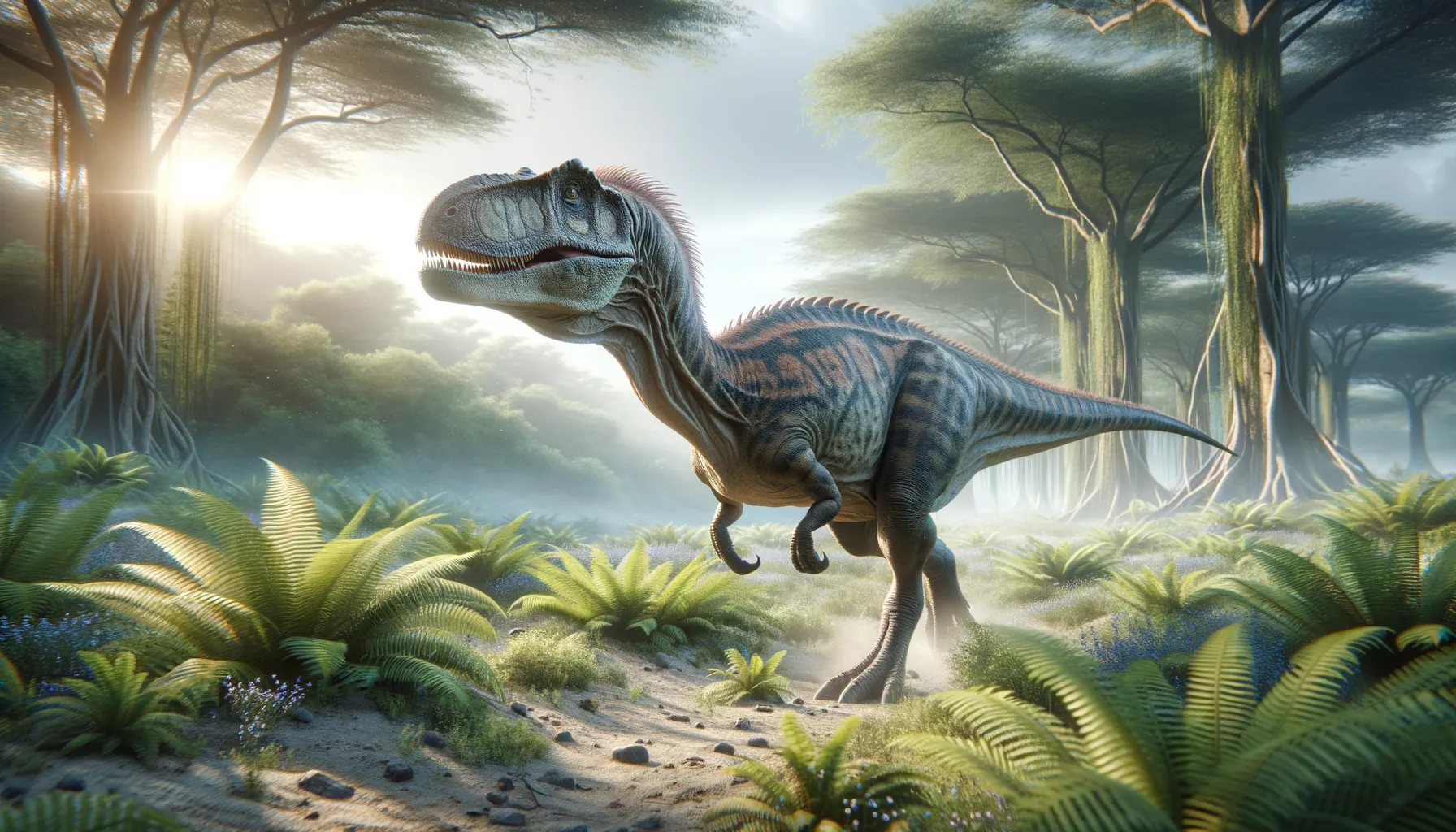
Yueosaurus
Agility meets herbivore harmony.
Period
Cretaceous
Length
Roughly 3 meters (9.8 feet) long.
Height
About 1 meter (3.3 feet) tall.
Weight
Approximately 70-100 kg (154-220 lbs).
Yueosaurus was a small herbivorous dinosaur from the Early Cretaceous period, found in China. This ornithopod was well-suited for a plant-eating lifestyle with specialized teeth for grinding foliage. Its discovery has provided insights into the diversity of early herbivorous dinosaurs in Asia. It possessed a lightweight build, making it agile, and likely relied on its agility to evade predators. These traits, alongside its herd behavior, enhanced its survival in a challenging prehistoric ecosystem.
Diet
Yueosaurus was primarily herbivorous, subsisting on a diet of low-lying plants and ferns. Its teeth were adapted for grinding, indicating its preference for softer vegetation.
Hunting
As a herbivore, Yueosaurus did not hunt other animals. Instead, it foraged for a variety of plant materials. It likely traveled in groups to effectively locate food sources.
Environmental challenges
Yueosaurus faced predatory threats from larger carnivorous dinosaurs of its time. It had to rely on its agility and herd mentality for protection. The shifting climate of the Cretaceous may have posed additional challenges, affecting food availability. Understanding these challenges helps us appreciate the adaptive strategies it developed.
Speed
Moderate paced, likely moved in herds.
Lifespan
Estimated to live around 15-20 years.
First discovery
Unearthed in Zhejiang, China, in 2014.
Fun Facts
- Yueosaurus was a small dinosaur, measuring about 1 meter long, making it a lightweight in the dinosaur world.
- This dinosaur lived during the Early Cretaceous period, which was around 125 million years ago.
- Yueosaurus fossils were discovered in China, specifically in the Zhejiang Province.
- The name Yueosaurus pays tribute to an ancient name for the Zhejiang region where it was found.
- Yueosaurus is a type of ornithopod, a group of herbivorous dinosaurs that walked on two legs.
- Despite its small size, Yueosaurus shows evidence of being a herbivore, munching on leaves and plants to survive.
Growth and Development
Yueosaurus likely grew quickly in its early stages to reach a size that would deter smaller predators. As with many dinosaurs, it might have exhibited rapid growth spurts followed by periods of slower development. These growth patterns would have been crucial for survival.
Habitat
Yueosaurus inhabited forested areas or open plains, rich in vegetation. This environment supported its herbivorous diet, providing ample foliage. It likely needed a habitat with sufficient water resources to thrive.
Interaction with other species
Yueosaurus probably coexisted with various other herbivorous and carnivorous dinosaurs. It relied on its social structure to alert others in its herd of nearby threats. These interactions would have shaped its evolutionary path.
Natural lifespan
Yueosaurus may have lived up to 20 years in the wild.
Reproduction
Yueosaurus likely laid eggs, as with most dinosaurs, in communal nesting sites. Incubation may have involved parental care to some extent. The juveniles were probably vulnerable to predators in their early stages.
Social behaviour
Yueosaurus is believed to have lived in herds, enhancing protection. This social behavior enabled better communication and coordination, vital for collective defense mechanisms. Living in groups may have also improved their foraging efficiency.
Fossil locations
The primary fossils of Yueosaurus were found in Zhejiang, China. These sites have offered significant insights into the Cretaceous terrestrial ecosystems of Asia. Further discoveries may refine our understanding of its distribution and ecological role.
